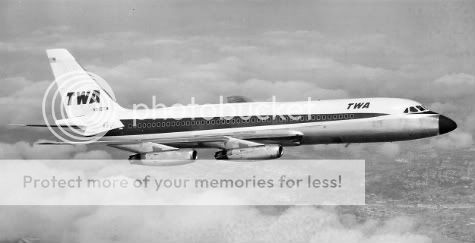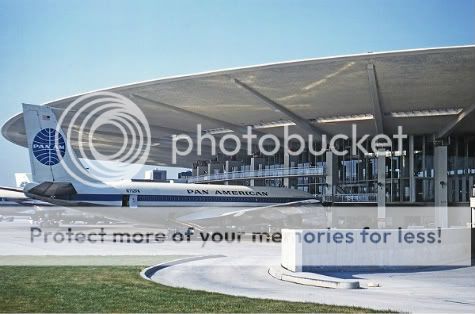Shevek23 said:
other reasons for the plane not to be accepted involved its range. It couldn't fly far enough for transAtlantic operations. Its fuel consumption suffered because of its engines--I've read that actually quite suitable engines that would lower fuel consumption were actually available
I'd disagree. There's no reason the C.102 had to have transatlantic range. Indeed, the most successful jetliner befor the 747, the 727, was in the same range class as the C.102. And, AFAIK, the Derwents used by the C.102 weren't especially thirsty. The C.102 did have issues of fuel reserves; early on, as I understand it, the reserves required by law were ridiculously high.

Shevek23 said:
I honestly don't know what prevented anyone in North America or Europe from adopting it. Early jets were already very popular with passengers. You'd think US transcontinental markets would snap it up.
Not transcontinental, but regional carriers: Houston-Dallas, Detroit-Chicago/Cleveland, NYC-Boston-Philadelphia-DC, L.A.-SF, so forth. Why didn't they buy it? Because TCA didn't--& if the original contracting customer didn't (even it was for
stupid reasons,

& it was

), U.S. airlines were bound to be suspicious...

Shevek23 said:
The Canadian market may have been insufficient on its own to justify the cost of production
It was. It wouldn't have mattered: with no competition,




lower purchase cost (about half what a DC-6 cost

), much lower operating costs (fuel, spares, &, most important, crews

), higher speeds (& so more passengers/day


without needing more crews




), the C.102 could
easily have dominated the airline market. Avro Canada would have been the #1 maker by default. (The only thing AvCan needed to deal with is making sure the C.102 had round windows.

)
Shevek23 said:
why wasn't this first-ever jetliner, made in Canada, first accepted at least in Canada?
See "TCA are morons" upthread.


As I understand it, it was because the C.102 didn't have the AJ.65 (Avon) engines TCA had specified. The AJ.65 weren't available for civil use at the time, IIRC, nor would they be for years to come. So AvCan used Derwents, which were available & dead reliable. When they presented to TCA, the airline said no, because the AJ.65s weren't used.


(This is taken from a potentially partisan source, so take with a grain or two of salt.)
Shevek23 said:
get some American customer to look at it, realize it's perfect for their needs and will wow the socks off their customers
Howard Hughes looked at it seriously. And the USAF was looking for a fast tanker type to service its jet fightes, the KC-97s being too slow. An order for even a handful (instead of the *KC-135), Avro would have been golden. This might have been just enough to carry them til Hughes decided to buy a few, & Hughes was always fairly obsessed with speed.
One thing I do wonder: if the C.102 does take the place of the 727 beginning around 1950, does that wipe out any airliner makers? IIRC, Convair was on the way out anyhow.
Shevek23 said:
The American scene would be totally, not subtly, different.
You have no idea.

Shevek23 said:
[Jetliner] might have turned out to have some unanticipated drawback, perhaps not a fatal one like the Comet, but it could be that given a trial in the actual marketplace it wouldn't turn out to be quite as good as it looked.
Possible, but it looks like the biggie, round windows, was already addressed. Lack of seats could be dealt with in later models, as it was in the OTL 707 & 727. (This might ultimately require stronger wing spars.)
RCAF Brat said:
From the article, one design flaw did show up during what testing was done on the prototype: Noticeable cracks in the wing spar. Noticeable in that the pilots heard cracking while the plane was on a flight from Toronto to New York and refused to fly it back.

I'd forgotten about that...
RCAF Brat said:
and I'd bet that the metal fatigue issue could well have shown up in this plane too.
As said, not impossible the C.102 would run into trouble. Still, it's not like airliners, even in 1950, were considered safe as houses.

Unlike now.
If there were a couple of accidents in the C.102, after entering service somewhere, it could push back wider acceptance of jetliners by a decade.


Delta Force said:
...intervention of famed aviator and businessman Howard Hughes in 1953
By then, as I understand it, the C.102 was already a dead duck.

Shevek23 said:
Why was that?
...why would Canadian society work that way, to channel all Canadian aeronautical enterprise to Quebec or discourage it?
You're ignoring the obvious: it's
Quebec. Which has
always gotten special treatment. Not only because, to win a federal election, you pretty much have to win both Ontario & Quebec. Nor only because of the
separatistas.

Shevek23 said:
no 747s. Something else might be like it, but its status must surely be different.
"Must"? OTL it bears much the same relationship as the KC-135 to the 707: derived from a military spec. I see no reason the USAF wouldn't still need, & buy, a *747. It might not buy the Lockheed & get the C-5; it might actually prefer the Boeing proposal TTL, which means 747.

